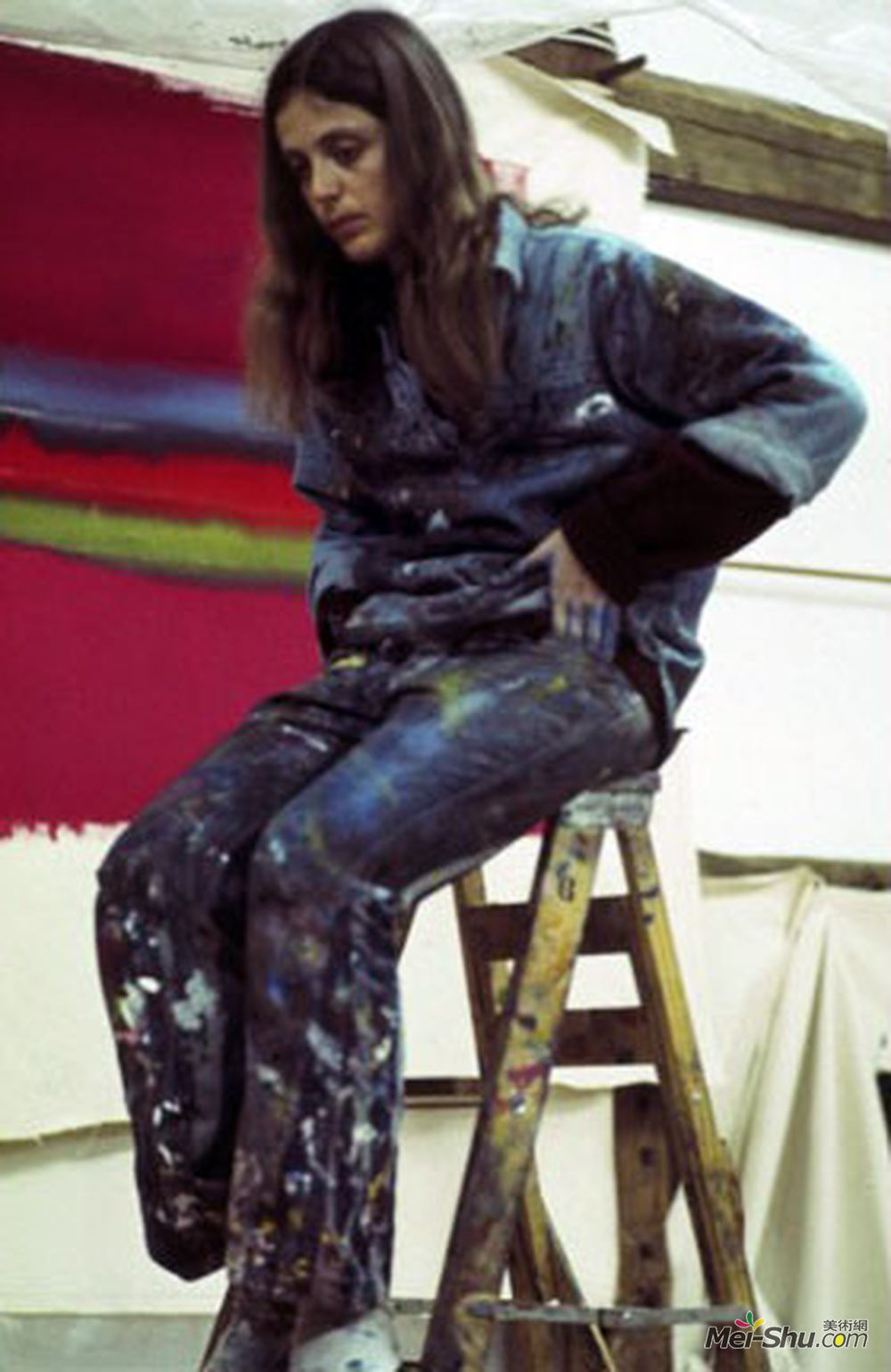
帕特利普斯基(Pat Lipsky)
艺术家: 帕特利普斯基
生于: 1941;
国籍: 美国
流派: 抽象表现主义,画后抽象
领域: 绘画
Pat Lipsky是一位与抒情抽象、色彩场绘画和几何抽象相关联的美国画家。利普斯基在纽约长大。1963年,她毕业于康奈尔大学,获得曼哈顿亨特学院绘画研究生课程的文学硕士学位,与画家和雕塑家托尼·史密斯一起学习。在纽约展出,在安德鲁和233;艾默里克画廊。她当时的作品强烈地处于“抒情抽象”的模式。"1969年的画布&Spi..";(沃斯堡现代艺术博物馆收藏,彼得·宾斯托克夫妇的礼物,纽约)展示了Lipsky'当时的方法:近色调,明亮的颜色波浪和爆发。在《纽约时报》上,评论家希尔顿·克莱默发现这位画家的作品既着眼于过去的美学,也着眼于未来的美学:&Lipsky小姐为了显著的反表现主义目的,重新引入了抽象表现主义的滴水、飞溅和污点……她自己的身份。她的画很漂亮,看看她是如何发展出大胆的图画智慧的,将会很有趣。&Lipsky应邀参加了1970-1971年在全国巡回演出、在纽约&s W_举行的颇具影响力的抒情文摘展览。评论家诺埃尔·弗兰克曼强调了她对新鲜、手势和活力的贡献,发现这种风格"保持了一种庆祝色彩光彩夺目的气氛。这些形状的边缘像火焰一样舔舐而出,在浮躁而直接的形式中具有燃烧的生动性……这些是令人垂涎的绘画。"
到七八十年代后期,Lipsky已经扩展她的调色板以包括更大胆的颜色和几何形式。正如评论家凯瑟琳·克鲁姆后来所写的那样,她也开始探索绘画词汇,以直接挑战她抒情抽象的根源。到2003年,评论家凯伦·威尔金将宣布《新标准》中的利普斯基为“不悔改的抽象画家。"Wilkin在作品中发现,”amp;A life.&A life.&当然,这是所有艺术都值得认真对待的,不管是抽象的、比喻的,还是介于两者之间的,都应该加以解决。"
在1980年代和90年代,Lipsky继续完善她更广泛的色彩关注,实现了更宽泛、更清晰定义的调色板。1994年在迈阿密和1997年在纽约市分别展出了这一时期的作品"TheBlackPaings"威尔金发现这个时期的暗色作品是有意限制的"黑色的,具有戏剧性"和强大的。"在2000年代,利普斯基开始重新定义调色板,将颜色重新组合到一个醒目的中心图像中。
Artist :Pat Lipsky
Additional Name :Pat Lipsky
Born :1941
Nationality :American
Art Movement :Abstract Expressionism,Post-Painterly Abstraction
Pat Lipsky is an American painter associated with Lyrical Abstraction, Color Field Painting, and Geometric abstraction. Lipsky grew up in New York City. She graduated with a BFA from Cornell University in 1963, receiving an MFA from the Graduate Program in Painting at Manhattan's Hunter College, where she studied with the painter and sculptor Tony Smith.
Raised by a painter mother and an engineer father, Lipsky had her first one-woman show in New York, at the André Emmerich Gallery. Her work at the time was strongly in the mode of “Lyrical Abstraction." The 1969 canvas "Spiked Red" (Collection of the Modern Art Museum of Fort Worth, Gift of Mr. and Mrs. Peter Bienstock, New York) demonstrates Lipsky's then-approach: close hues, bright color waves and bursts. In The New York Times, the critic Hilton Kramer found that the painter's work looked both to the aesthetic past and future: "Miss Lipsky reintroduces the drip, splatter and smear of abstract expressionism for notable anti-expressionist purposes...She also demonstrates a very clear identity of her own. Her pictures are very handsome, and it will be interesting to see how she develops what is already a bold pictorial intelligence." Lipsky was invited to participate in the influential 1970-1971 Lyrical Abstraction exhibition which traveled the country and culminated at New York's Whitney Museum; the critic Noel Frackman highlighted her contributions for freshness, gesture and exuberance, finding the style "sustained a mood which celebrates the sheer splendor of color. The edges of these shapes lick out like flames and there is an incendiary vividness in the impetuous yet directed forms...These are mouth-watering paintings."
By the later seventies and eighties, Lipsky had expanded her palette to include bolder colors and geometric forms. She had also begun to explore, as the critic Katherine Crum later wrote, a pictorial vocabulary in direct challenge to her roots in lyrical abstraction. By 2003, the critic Karen Wilkin would declare Lipsky in The New Criterion to be an "unrepentant abstract painter." Wilkin found in the work, "A lifetime's accumulated experience of all kinds, including the experience of looking at art. That, of course, is what all art worth taking seriously—whether abstract, figurative, or somewhere in between—is supposed to address."
In the 1980s and 1990s Lipsky continued to refine her broader color concerns, achieving a brooding, more sharply-defined palette. A selection of works from this period, "The Black Paintings," was exhibited in Miami in 1994 and New York City in 1997. Wilkin found the "deliberately limited" dark work of this period to be "dramatic" and "powerful." In the 2000s, Lipsky began another redefinition of palette, reincorporating color within a bold central image.